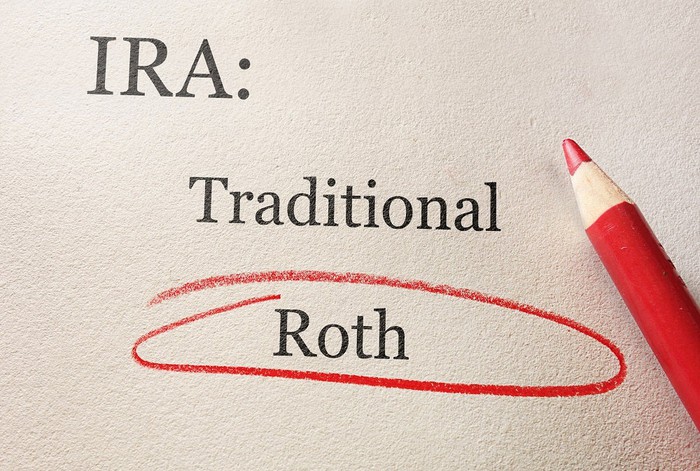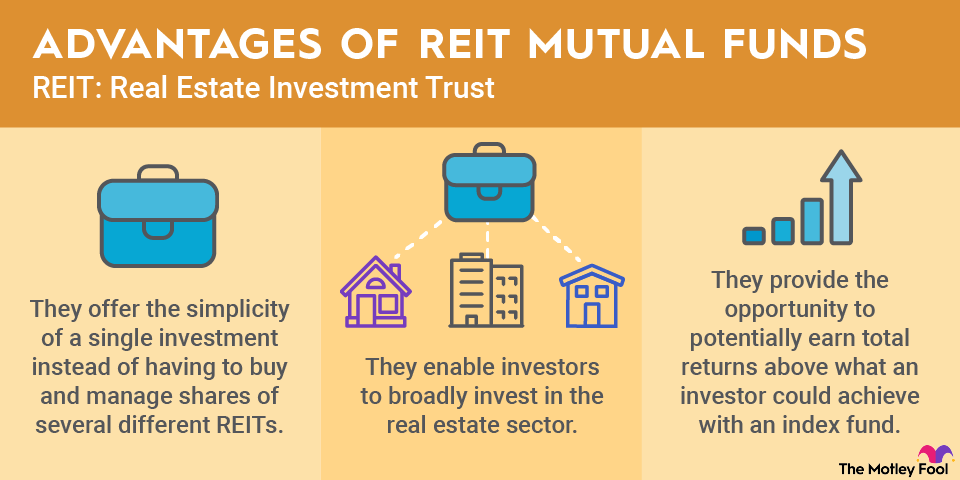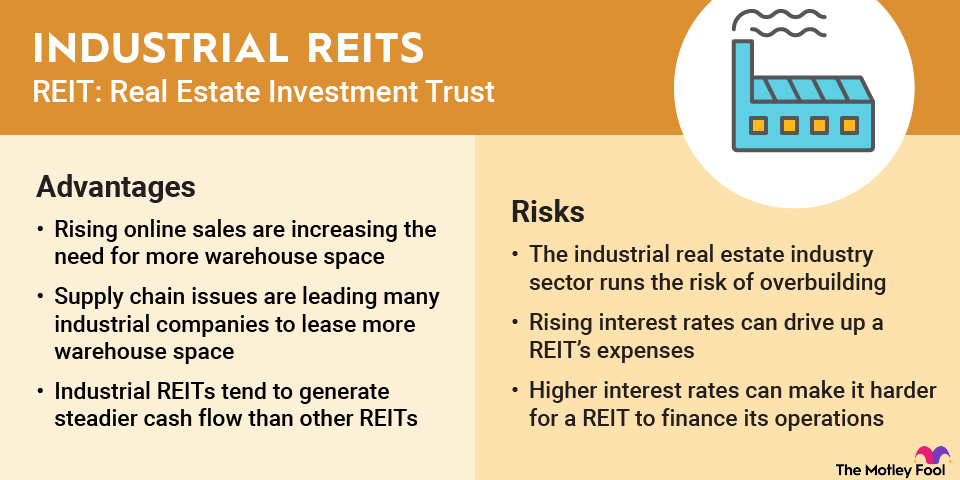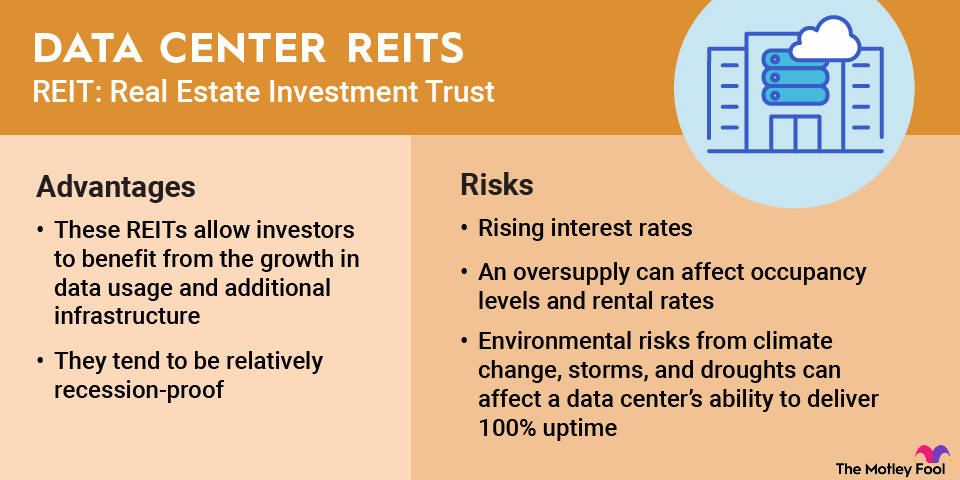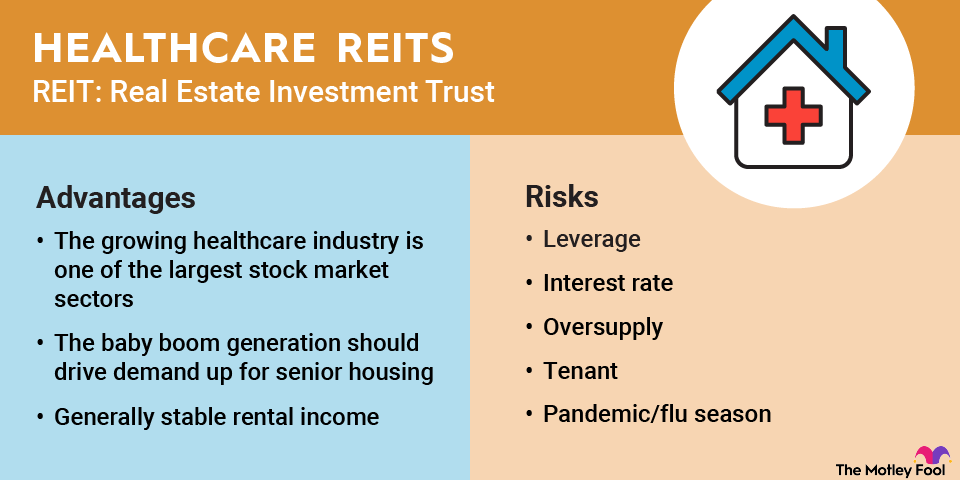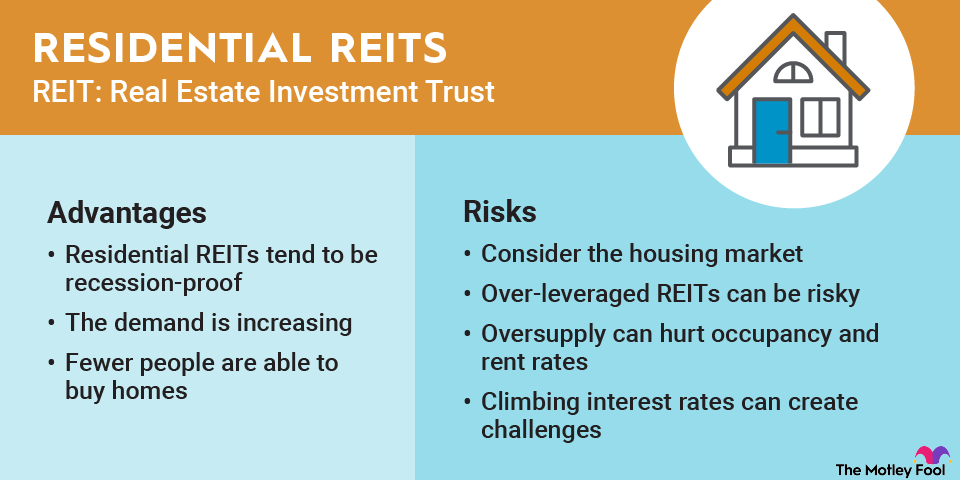Diversified real estate investment trusts (REITs) are entities that invest in more than one type of commercial real estate. Instead of focusing on a specific property type (e.g., retail, industrial, residential, or office properties) like most REITs, these entities get a meaningful percentage of their rental income from more than one type of property (e.g., they own a mix of retail and industrial properties).
Here's a closer look at why some REITs opt to diversify and the advantages and disadvantages of being a diversified REIT. We'll also look at some of the top diversified REITs for investors to consider.

Understanding diversified REITs
A diversified REIT owns a diversified portfolio of commercial real estate assets, which can include:
- Office buildings and business parks.
- Warehouses and other industrial buildings.
- Multifamily properties.
- Healthcare-related real estate, like medical office buildings.
- Retail properties, including freestanding retail buildings and shopping centers.
- Hotels and resorts.
- Gas stations and travel centers.
- Self-storage facilities.
- Mixed-use properties that include offices, retail, and multifamily units.
Many diversified REITs focus on owning single-tenant net lease real estate. These are properties secured by long-term triple net (NNN) leases with the occupying tenant. This lease structure makes the tenant responsible for maintenance, building insurance, and real estate taxes, enabling the REIT to collect steady rental income.
NNN
However, some diversified REITs will own multi-tenant properties with some rental income variability due to a shorter-term lease structure or variable expenses. In addition, some diversified REITs own properties that they operate alongside a third-party manager (e.g., hotels and self-storage facilities). These properties can have even more income variability since occupancy and rates can decline quickly during a recession.
Diversified REITs don't buy properties at random. They develop an investment strategy that focuses their efforts on a specific theme. For example, some diversified REITs concentrate on a particular type of property (e.g., global net lease real estate or service-related properties). Meanwhile, others focus on owning a diversified real estate portfolio in a specific city.
Advantages of investing in diversified REITs
Diversified REITs make it easy to invest in real estate. These REITs typically own a diversified portfolio providing investors with reasonably broad exposure to several types of commercial real estate, often with offsetting risk profiles. In some ways, owning a diversified REIT is similar to investing in a REIT ETF. They both can provide instant diversification across several property types.
Risks of investing in diversified REITs
While diversified REITs can help reduce an investor's risk profile, they aren't without risk. Here are some risk factors to keep in mind before investing in diversified REITs:
- Higher dividend payout ratios: Because of their diversified operations, many diversified REITs have chosen to pay out the bulk of their cash flow via dividends and therefore have high dividend payout ratios. While that typically means they are high dividend REITs, it increases the risk of a dividend reduction if a property segment runs into trouble.
- Slower growth: Because diversified REITs retain less cash, they tend to be slower-growing companies.
- Potential for financial issues: The high dividend payout ratio also tends to cause these REITs to heavily rely on debt and issuing stock to expand. This can cause financial troubles if a property segment faces issues or market conditions grow more challenging.
- Property type-specific issues: While diversification reduces some risks, it increases other potential risk factors, such as the potential for one property type to drag on its results. For example, office and retail properties have experienced headwinds in recent years. This issue has led several formerly diversified REITs to shift their strategies by narrowing their investment focus to property types with the best long-term growth prospects.
- Interest rate risks: As interest rates rise, it becomes more expensive for REITs to borrow money and refinance their debt. In addition, higher interest rates make lower-risk, yield-focused investments such as government and corporate bonds more attractive to income investors. As a result, REIT stock prices tend to fall, pushing up dividend yields to compensate investors for their higher risk profiles.
3 top diversified REITs to buy
There were 12 publicly traded diversified REITs in late 2025, according to the National Association of Real Estate Investment Trusts (NAREIT). This number has been shrinking in recent years. Several formerly diversified REITs have chosen to focus on a specific property type after years of underperformance in some of their other property segments.
Despite the shrinkage, investors still have several interesting diversified REITs to consider. The three biggest diversified REITs by market capitalization are:
Here's a closer look at these diversified REITs.
1. W.P. Carey

NYSE: WPC
Key Data Points
2. Broadstone Net Lease

NYSE: BNL
Key Data Points
3. Global Net Lease
Related investing topics
Diversified REITs can be great options for real estate investors
Diversified REITs enable investors to own a diversified real estate portfolio through one investment, reducing risk. However, it's essential to know what's in a diversified REIT's portfolio. That's because most of these companies develop a strategy around a particular theme, which has its pros and cons. While some of these strategies have worked well over the years, others have faced headwinds, leading the REIT to shift gears.




